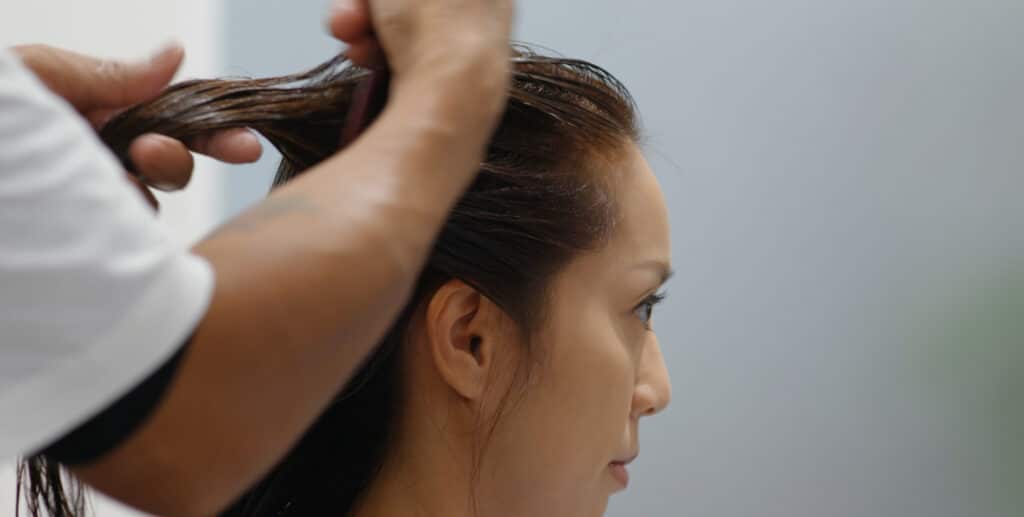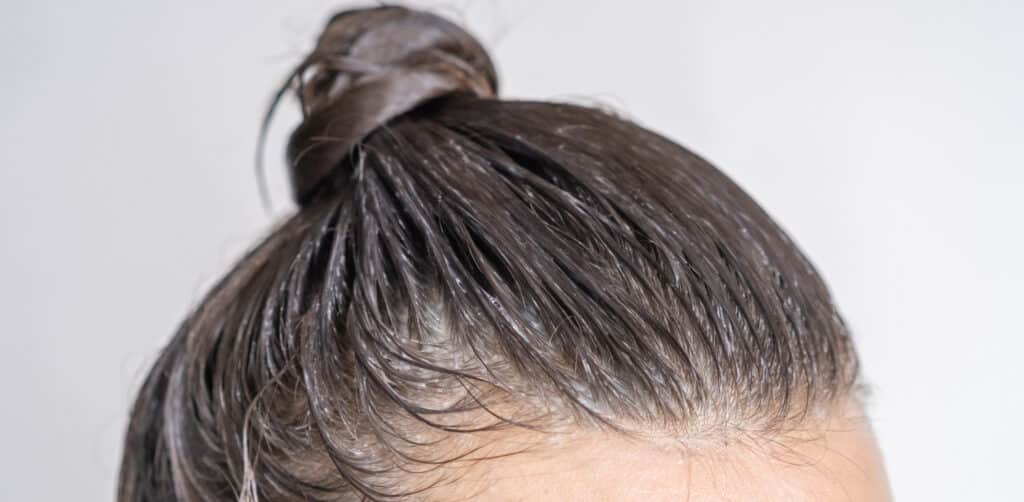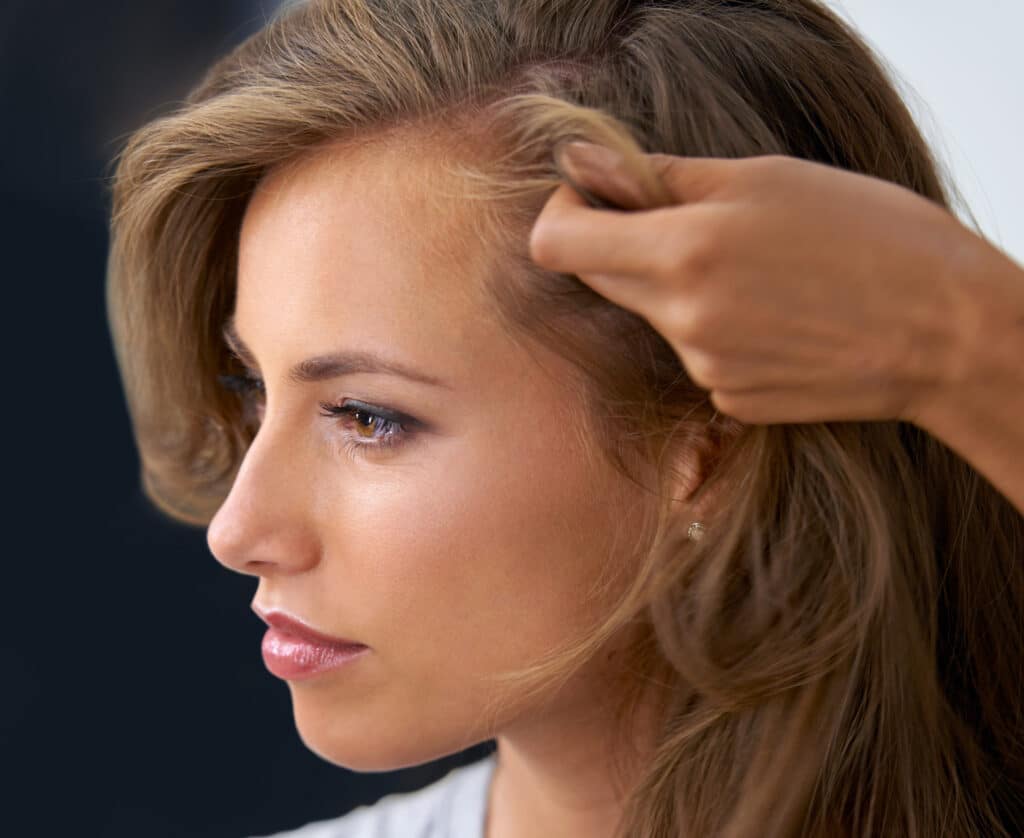Receding hairline, women or men is a problem that’s hard to deal with. Losing hair, especially one that’s visible and causes hairline to recede could be due to various reasons. It’s not as common as it is for men and there are ways to manage it. Let’s learn more about it including possible remedial measures, shall we?
Receding Hairline in Women
Gradual loss of hair along one’s frontal line of hair that creates an uneven or ‘m’ shaped appearance is receding hairline. This is more common in men, though women aren’t immune to it.

Why Receding Hairline?
As noted earlier, receding hairline is characterized by thinning and hair loss typically at the front of one’s scalp. Numerous factors including hormonal changes, genetics and hairstyles can trigger it. Understanding it helps prevent or manage it better. Don’t you think so?
This condition is common with male pattern baldness and female pattern baldness, though increasingly more women experience it these days. Even so, unlike male pattern baldness it’s not sudden or very obvious and happens gradually.
Another common cause is pulled up hairstyles like ponytails, braids or buns that require pulling hair up and tight. Too many chemical treatments are another factor these days. Both these can cause traction alopecia, a hair loss condition that’s characterized by receding hairline.
Alopecia & Receding Hairline – The Connection
The most common cause of receding hairline in women is androgenetic alopecia, closely followed by traction alopecia.
We all know androgenetic alopecia is the leading cause of hair loss in women. One of the characteristics that set apart this hair loss condition is the receding hairline. Stress and hormonal upheavals can also have a hand in this hair loss condition.
Traction alopecia is another female hair loss condition that is due to damaging hair styles or styling methods.
Have you seen larger foreheads are common with those who opt for pulled up hairstyles? Yes, it’s also very common with afro and afro-American women who opt for hairstyles that pull up hair tight.
How to Know if It’s Female Pattern Hair Loss
Female pattern baldness or male pattern baldness have certain characteristics that set them apart, though you can always consult a specialist for accurate diagnosis. Certain key traits that are characteristics of female pattern hair loss include:
A receding hairline, where the hairline moves backward. It is more prominent in black women who opt for tight and pulled up hairstyles.
Gradual hair loss, which is more common. Though the hair loss itself is often profuse and can be sudden in some women.
Thinning of hair – this could be on top of the head, crown of the scalp, though could also be diffuse or overall hair thinning too.
Reduction in hair density and volume – this is more common in women who experience continued but gradual hair loss, unlike men who lose lot of hair to pattern hair loss.
Hair loss that’s associated with menopause – this is often pattern hair loss.
Did you know androgenic alopecia can start as early as 20s? This is why it is very important to keep track of one’s hair loss and get timely help.
What About Traction Alopecia?
This is another major cause of receding hairlines in women who experience hair loss. You might have probably noticed how certain women will opt for pulled up hairstyles more often. Africans are especially known for them – cornrows, bantu knots, different types of braids, etc.
Not just pulled up hairstyles, even damaging hair practices including too many heat or chemical treatments that can cause hair loss excessively could result in a receding hairline.
Nowadays, styling using relaxers or heat or chemical treatments for coloring, or straightening and whatnot have become completely normal. We don’t even realize that it is not good for our hair anymore. Just about everyone from school going kids, to working women and everyone is styling these days.
This is why along with female androgenetic alopecia, traction alopecia takes the cake when considering hair loss in women.
Causes of Receding Hairline in Women
Hair loss and receding hairline often go hand in hand. Though there are other causes too. Let’s take a look at the leading causes for receding hairline in women.
Also known as androgenetic alopecia areata, female pattern hair loss (FPHL) is one of the major causative factors.
Hormonal changes, including perimenopause, menopause and PCOS are other causes triggered hormonal changes. Most postmenopausal women have agreed they lose hair and are worried if it would become permanent.
Genetics could be another reason – if there’s a familial history of receding hairline or thinning hair then it’s time to be on the lookout.
How can we forget tight hairstyles? Pulled up ponytails, braids and even certain buns can be causing it. Even traction alopecia is often a result of this and that’s another causative factor for receding hairline.
Let’s not forget chemical treatments including perms and dyes.
What about stress? Stress can cause hair loss, disrupts normal hair growth cycle and can also affect the health of your hair follicle.
Certain health conditions and treatments could cause hair loss, which can result in a receding hairline. What about thyroid? What about chemotherapy or radiation? Even certain medications can result in hair thinning and a typical receding hairline that’s common with hair loss.
Nutritional deficiencies are another major hair loss contributor. It’s also why the Vitamins Revive Hair Growth Vitamins kit came into existence to promote hair growth.
Do we need more reasons or causative factors to think about? I think each one of us will have something to relate to hear, don’t we ladies?
Hair Growth and Hair Follicles
Hair growth cycle happens in phases and our hair follicle that produces hair plays a key role in the health of our hair. Any damage to hair follicles can lead to hair loss.
It is important to understand hair follicle damage is often irreversible and leads to permanent hair loss. In fact, traction alopecia is due to damage of one’s hair follicles that has resulted in receding hairlines in women.
While hair growth can be promoted through different means, the health of hair follicles will decide if or not hair regrowth is even possible! So take care not to damage them.
Remedies for Hair Loss & Receding Hairline
When dealing with hair loss or related issues, you’ve probably tried different things, even medical treatments. Turns out, certain readily available herbs can make great remedies!

The results vary with different individuals, so make sure to note down what’s happening in your case – this helps tract or compare notes. So, what are some remedies that help?
We have been covering remedies for different hair issues and some may be repeated – but some are really good and worth the repetition. Let’s see how many we can cover in the coming days.
Ginseng
Did you know Ginseng can stimulate hair growth? It also has other benefits and can be consumed or applied topically. What do you like to do?
Green Tea
The polyphenols in green tea can improve the health of your hair and hair follicles. Isn’t that great? You can consume it too. I love using it as a final rinse for my hair. Did you know you can also add it to your hair masks?
Onion
Juice of shallots, or onion has been touted as the next big thing in promoting new hair growth. There are numerous studies done on the efficacy of onions and many recommend this to combat female receding hairline and hair loss.
Scalp Massage
I love scalp massages. They’re relaxing and help me unwind and de-stress. What about you?
Did you know they help combat hair loss and more? It improves hair thickness and the overall health of your scalp.
I usually use a blend of oils for my scalp massage and slightly warm up right before the massage. Do you have any special recipes you follow?
Rosemary Oil
Did you know studies have proven Rosemary Oil helps combat androgenetic alopecia and improves hair growth? You can add a few drops of this oil to your hair oil, masks or even your shampoo. I love adding it to my hair oil or masks.
Red Clover
A DHT blocker and herb rich in flavonoids and isoflavones, red clover helps combat hair loss and related issues. You can add it to your hair oil, serum or other products and use it regularly for good results.
Treatment Options for Receding Hairline
There are advanced treatments for those who don’t find a resolution with traditional methods. Let’s take a look at a few commonly suggested treatment options, shall we?
Did you know there are oral medications that can help combat hair related issues? However, most don’t prefer this if there’s another way out.
Minoxidil is the most commonly suggested topical remedy for stimulating hair growth.
Hormone Replacement Therapy (HRT) is usually the route taken for hair issues triggered due to hormonal imbalances. Even thyroid disease can cause hormonal imbalance. Did you know that?
Have you heard about hair transplants or hair transplantation? This surgical procedure is becoming increasingly more common, especially for those who want a solution but don’t have the option to reverse their hair loss.
Platelet-Rich Plasma Therapy (PRP) is another option recommended to improve growth.
Low Level Laser Therapy (LLLT) is another non-invasive option to improve one’s growth rate.
How to Prevent Hair Loss & Receding Hairlines?
Are there ways to prevent hair loss or receding hairline or at least manage them better? Yes, would you like to know what helps?
Stress – it is really harmful in more ways than one. Keeping stress at bay is not only good for your hair, but also your health. There are relaxation techniques or even exercises that you can try for managing stress better.
Have a healthy and balanced diet. Want to grow new hair? Want to combat hair loss? Want to combat hair thinning? Nutrition is often the reason behind these hair issues.
Heat or harsh chemical treatments might sound nice but in the longer run, they do a lot of damage. Did you know some women even got bald patches as a result of hair damage? We already know they’re the reason behind traction alopecia, right?
Do you trim your hair regularly? It’s time to start NOW! It helps keep split ends at bay.
Use hair care products? No worries, not everyone can go the DIY route. Make sure to use mild and gentle products that are natural and don’t have any harmful ingredients added.
In most cases, a conditioner is needed. Find out the one that works best for you.
We all use different products. It is OK, but don’t go overboard. Avoid too many styling products or treatments to keep hair dryness or breakage at bay.
Tangles? Don’t pull out roughly to detangle your hair. Rather gently detangle with your fingers, or try using a detangling comb. Roughly trying to detangle your hair can cause breakage.
Does your hair look thin? Style your hair to give an impression of volume. Have you tried dry shampoo for adding volume?
Why is Diagnosis Important?
There are many reasons one should consider going to a specialist for a consultation. Not only will it give you insight, the solution will also help improve your self esteem. Don’t you think so?
A specialist can accurately diagnose what’s the problem. There are tests that can determine the possible causes for your hair loss. Also, once the issue is identified, it’s easier to get the appropriate treatment and resolve it.
Impact on Emotional and Mental Health
Hair loss is not just a cosmetic issue. Many agree it has an impact on their emotional health.
Did you know many women have reported feeling depressed or anxious? Both these feelings are understandable but it is important to seek help.
Some individuals might also benefit from counseling.
Conclusion
So, now we know what’s happening with women who face hair loss and why. Understanding is really helpful in coming up with viable remedial measures or identifying treatment options.
Understanding the problem isn’t the end, though most might need the help of a specialist to diagnose or come up with treatment options.
What else do you think you should do? Do let us know what you think!

